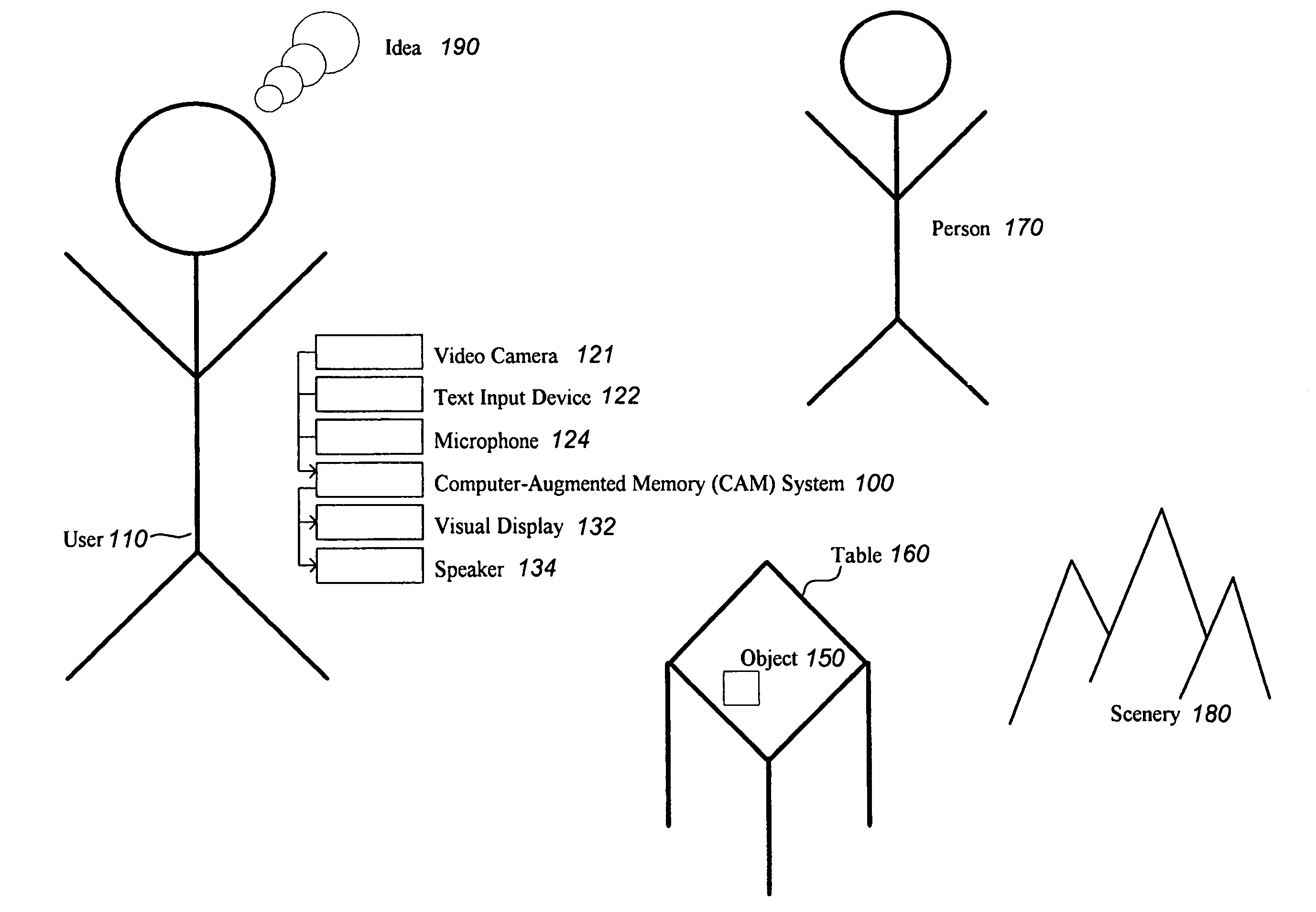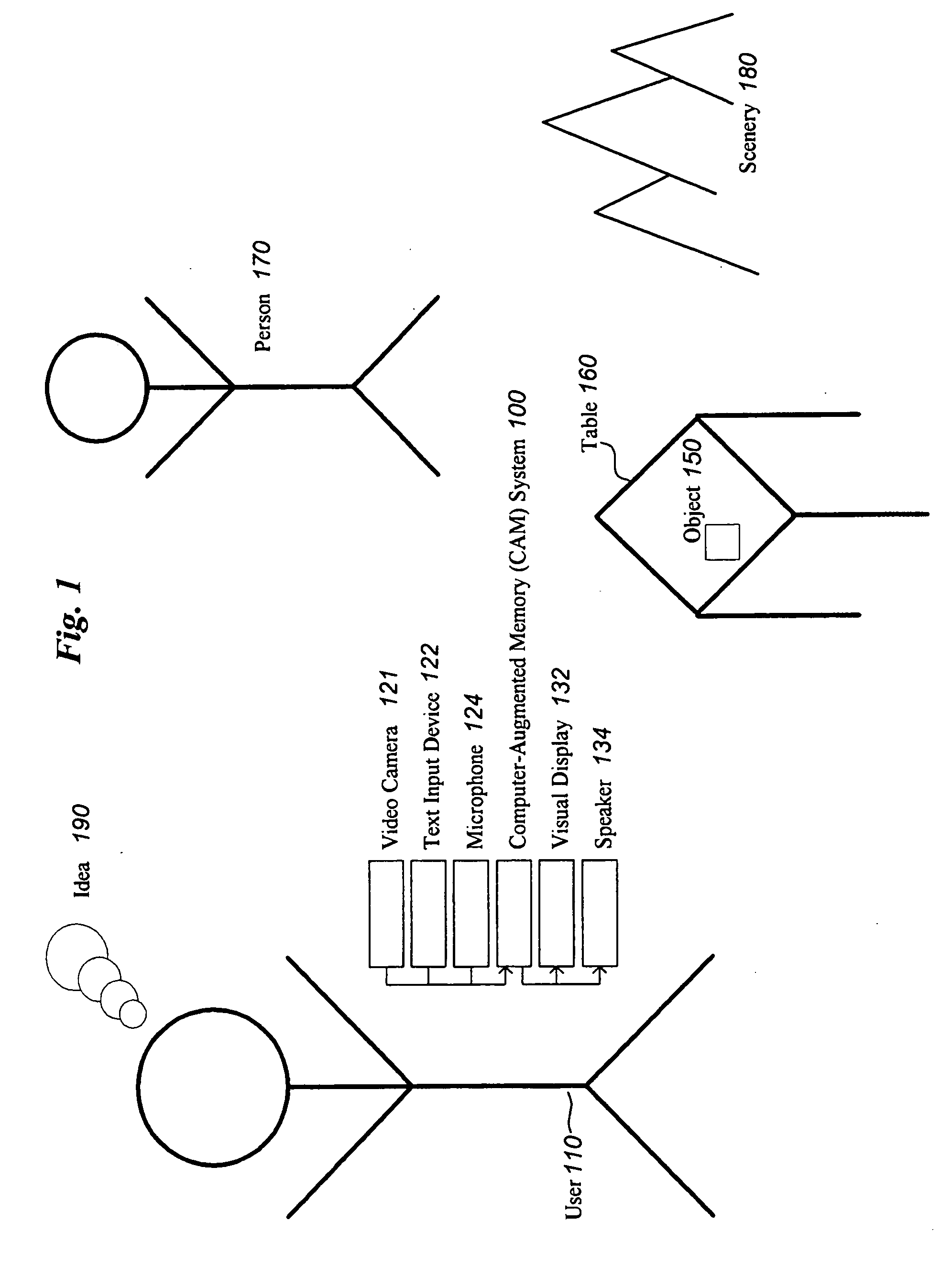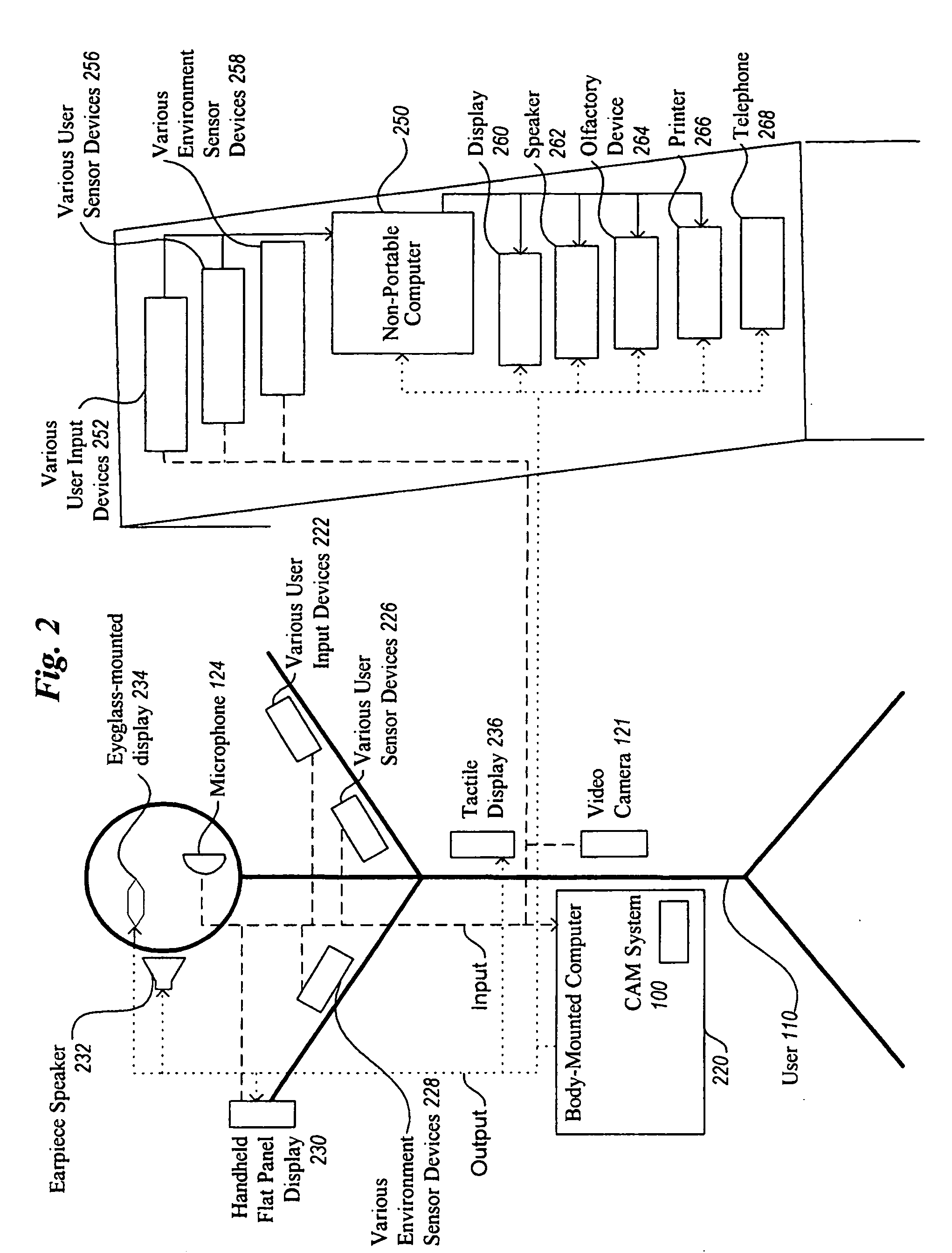Storing and recalling information to augment human memories
a technology of human memory and information, applied in the field of computer-assisted information management, can solve the problems of often inability to remember information without assistance, and life becomes even more complex, and achieve the effect of facilitating later retrieval of the group and enhancing human memories
- Summary
- Abstract
- Description
- Claims
- Application Information
AI Technical Summary
Benefits of technology
Problems solved by technology
Method used
Image
Examples
Embodiment Construction
[0026] The present invention provides a method and system for computer-based storing of information about a current state so that later recall of the information can augment human memories. In particular, when information about a current event of interest is to be stored, an embodiment of the Computer-Augmented Memory (CAM) system acquires a variety of current state information of different types (e.g., video, audio, and textual information) about the environment, about a user of the CAM system, and about the CAM system itself via internal and external sensors and other input devices. The CAM system then associates the variety of state information together as a group, and stores the group of state information for later retrieval. In addition to the current state information, the CAM system can also associate other information with the group, such as one or more recall tags that facilitate later retrieval of the group, or one or more annotations to provide contextual information when...
PUM
 Login to View More
Login to View More Abstract
Description
Claims
Application Information
 Login to View More
Login to View More - R&D
- Intellectual Property
- Life Sciences
- Materials
- Tech Scout
- Unparalleled Data Quality
- Higher Quality Content
- 60% Fewer Hallucinations
Browse by: Latest US Patents, China's latest patents, Technical Efficacy Thesaurus, Application Domain, Technology Topic, Popular Technical Reports.
© 2025 PatSnap. All rights reserved.Legal|Privacy policy|Modern Slavery Act Transparency Statement|Sitemap|About US| Contact US: help@patsnap.com



